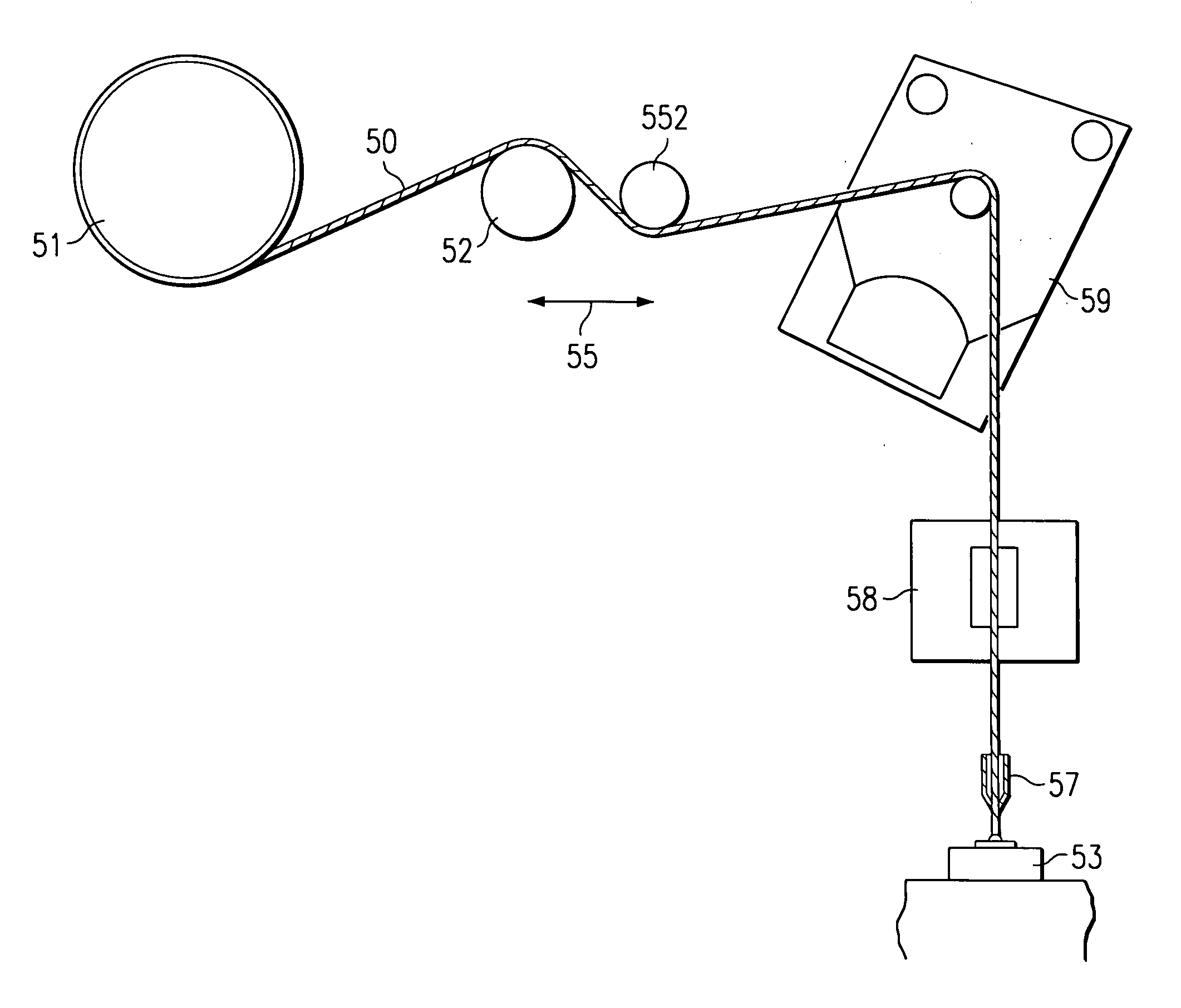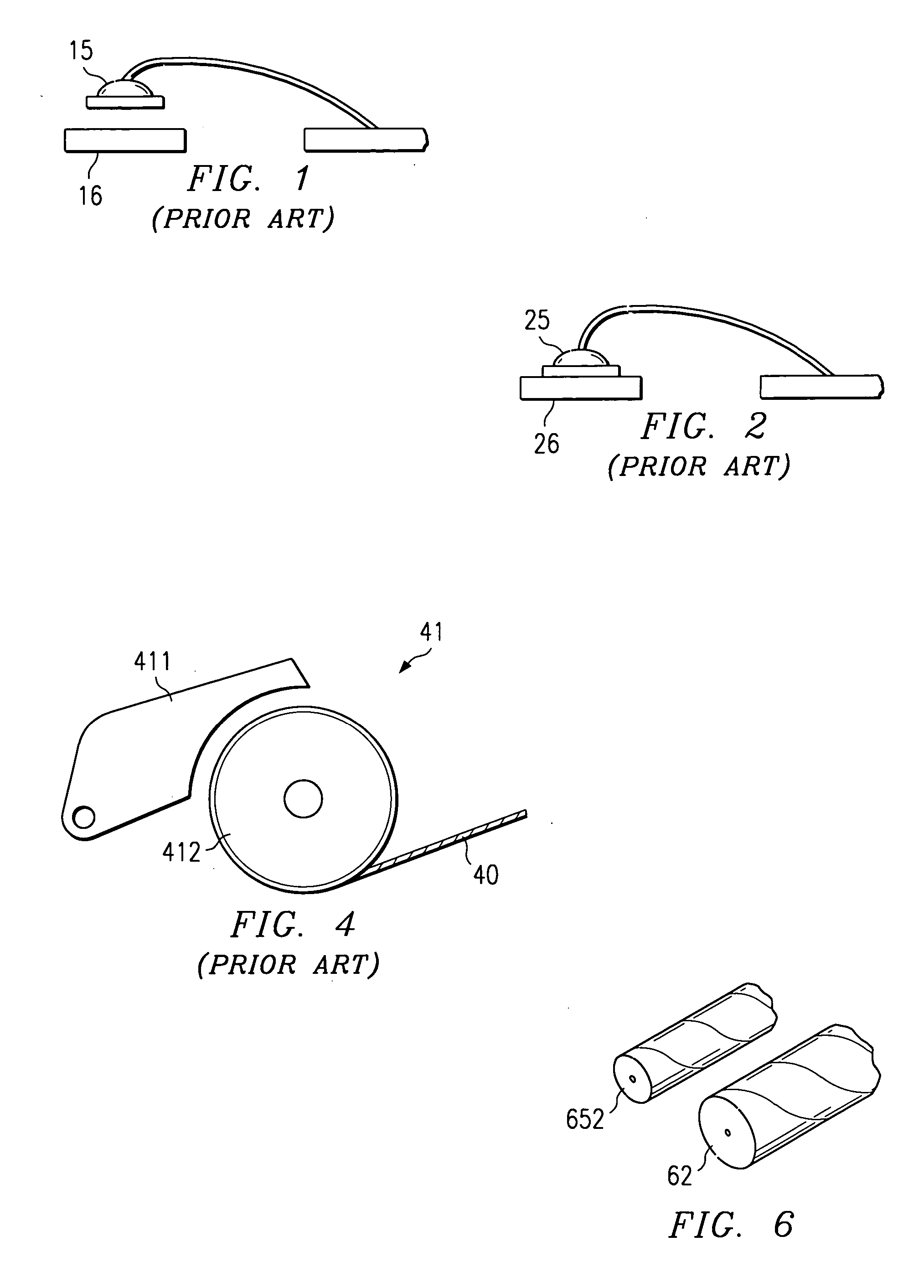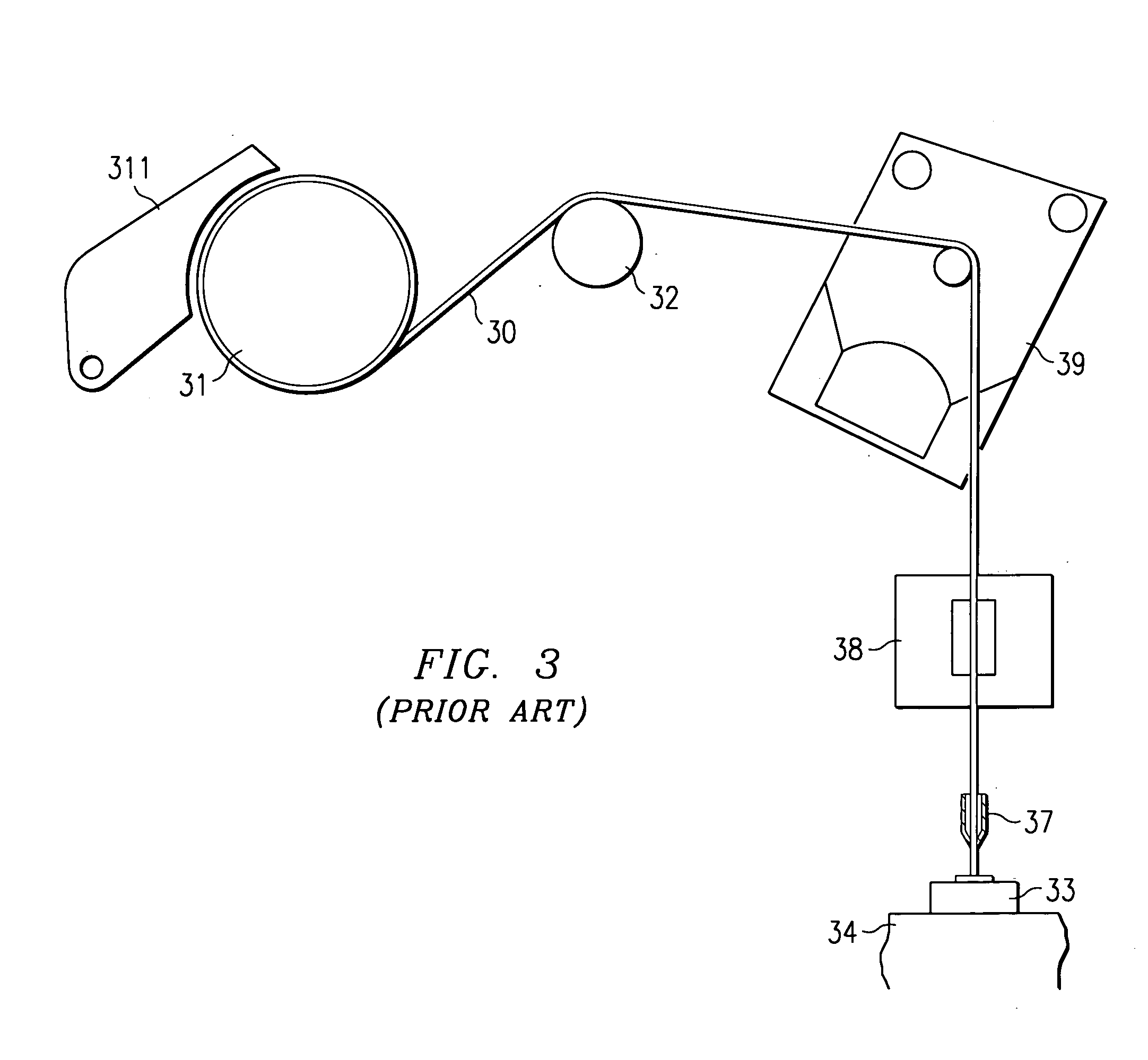Wire bond integrity test system
a testing system and wire bond technology, applied in the field of semiconductor device assembly, can solve the problems of increased cycle time, reduced production rate, work stoppage, etc., and achieve the effect of minimizing errors
- Summary
- Abstract
- Description
- Claims
- Application Information
AI Technical Summary
Benefits of technology
Problems solved by technology
Method used
Image
Examples
Embodiment Construction
[0020]FIG. 3 schematically depicts the path followed by the bond wire on many existing wire bonders. A fine gold wire 30, twenty-five microns or less in diameter, is fed from a wire spool assembly 31 to a protruding contact and guide mechanism 32, commonly referred to as a diverter. Diverter 32 makes electrical and mechanical contact with the wire 30, and helps control tension on the wire. The spool assembly 31 includes a wire wound spool and a spring held cover 311 for contacting the wire as it is fed from the spool.
[0021] The path of the wire continues through an air guide 39, a complex wire clamp assembly 38, and an insulating ceramic capillary 37. A ball formed at the end of the capillary is brought into contact with the bond pad of a grounded semiconductor device 33, situated on the work station 34 of a bonder. A transducer is energized to produce current and force for a sufficient time to cause the formed ball to bond to the pad while the wire clamp is in the open state. Afte...
PUM
| Property | Measurement | Unit |
|---|---|---|
| diameter | aaaaa | aaaaa |
| diameter | aaaaa | aaaaa |
| diameter | aaaaa | aaaaa |
Abstract
Description
Claims
Application Information
 Login to View More
Login to View More - R&D
- Intellectual Property
- Life Sciences
- Materials
- Tech Scout
- Unparalleled Data Quality
- Higher Quality Content
- 60% Fewer Hallucinations
Browse by: Latest US Patents, China's latest patents, Technical Efficacy Thesaurus, Application Domain, Technology Topic, Popular Technical Reports.
© 2025 PatSnap. All rights reserved.Legal|Privacy policy|Modern Slavery Act Transparency Statement|Sitemap|About US| Contact US: help@patsnap.com



